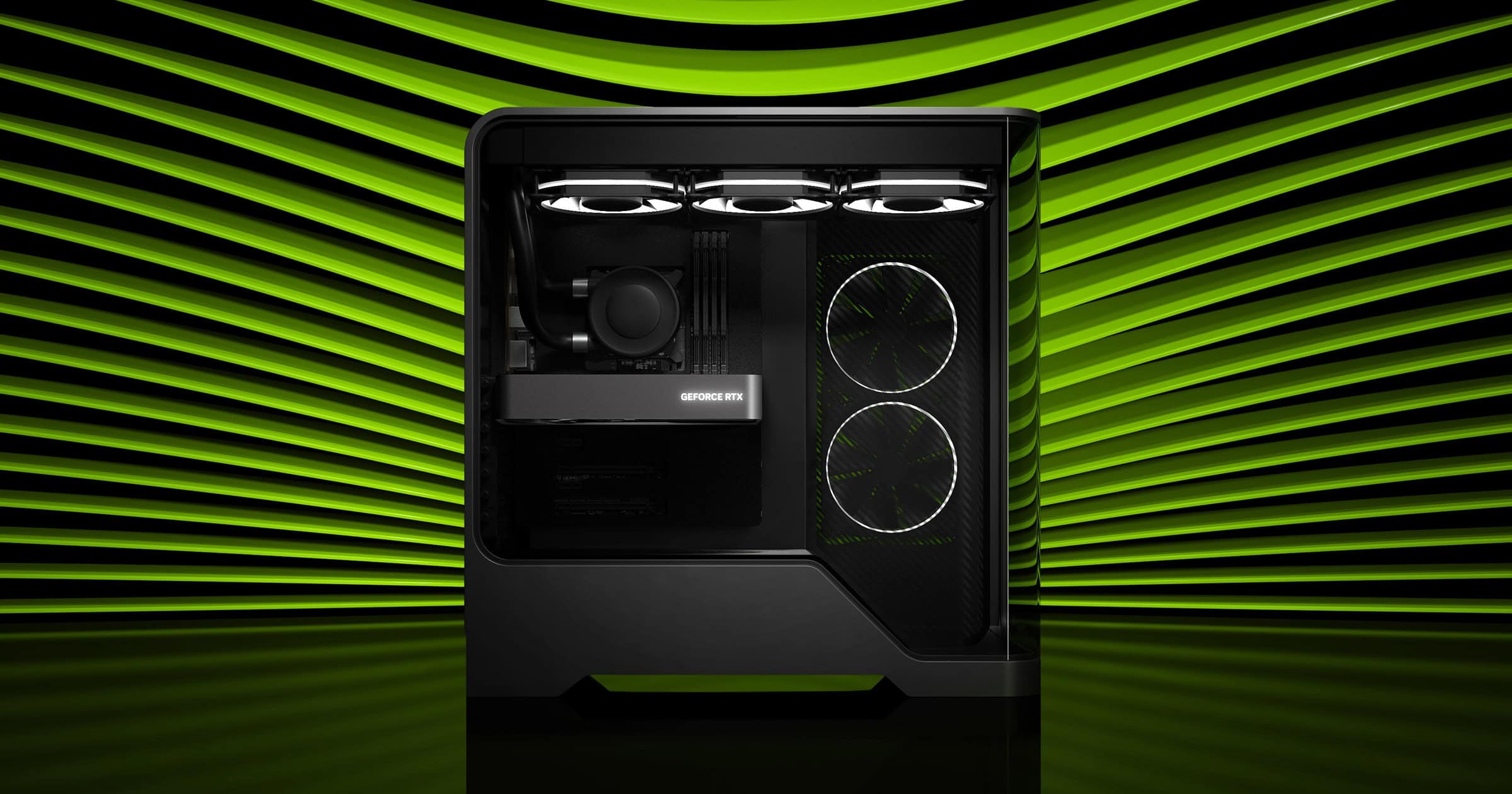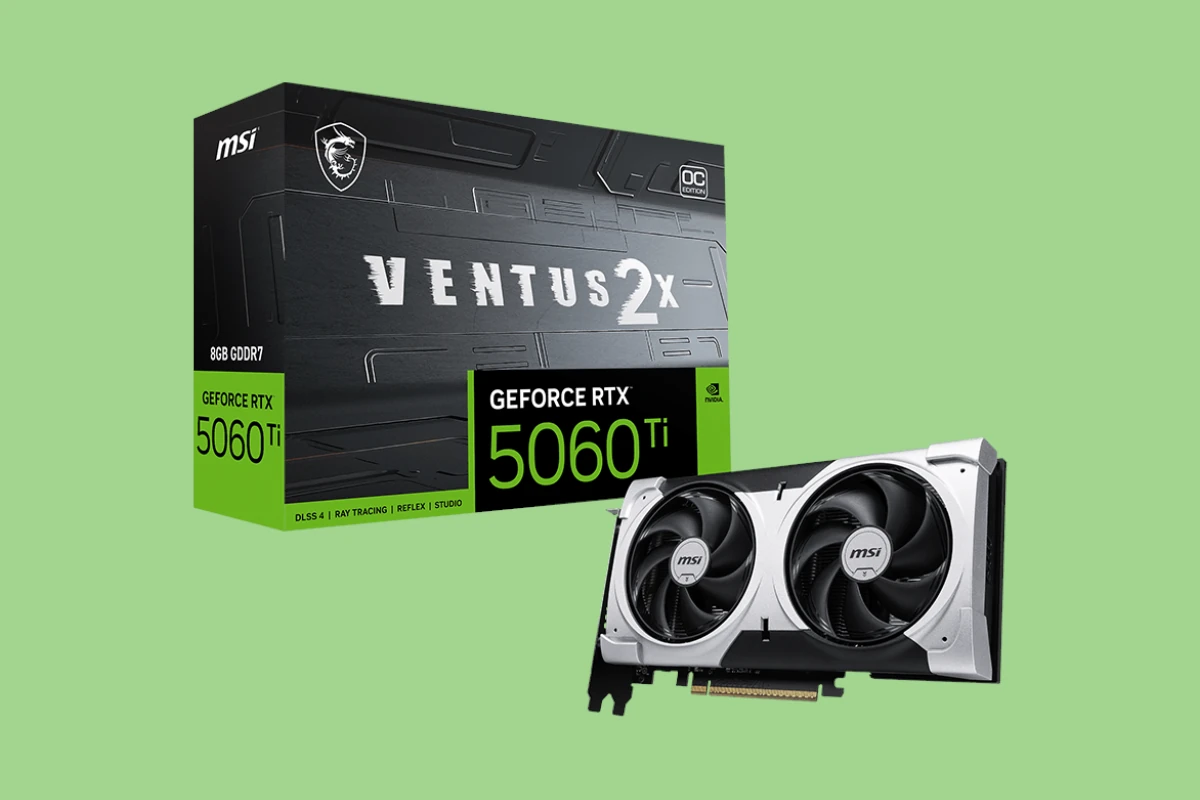When NVIDIA officially launched the GeForce RTX 5060 Ti on April 16, 2025, it positioned the card as the next mainstream powerhouse for 1080p and 1440p gaming. Built on the new Blackwell architecture, available in both 8GB and 16GB GDDR7 configurations, and featuring support for DLSS 4 with Multi Frame Generation, it checked a lot of boxes on paper. But as benchmarks and reviews rolled in, a growing number of gamers began questioning whether this GPU truly delivers on its promises—or if it’s another case of overhype and under-delivery.
Let’s dig into what’s fueling the skepticism and what the data actually tells us.
The Performance Uplift: Underwhelming or Just Mislabeled?
At a glance, the RTX 5060 Ti looks like a solid generational improvement. It sports:
- 4608 CUDA cores
- Boost clock speeds up to ~2.57 GHz
- 16GB or 8GB of GDDR7 on a 128-bit bus
- 448GB/s of memory bandwidth
- TDP of 180W
Yet performance benchmarks have painted a more nuanced picture. In rasterized gaming workloads, the RTX 5060 Ti shows:
- 13–27% gains over the RTX 4060 Ti at 1440p.
- 16–40% improvements over the RTX 3060 Ti, depending on the game.
- Performance in line with older high-end cards like the RTX 3080 and AMD’s RX 7800 XT in many titles.
But that’s where the frustration lies: two generations removed from the 3060 Ti, many gamers expected more than a 20-30% bump. Compared to cards like the RTX 3070 Ti—which you can now often find on the used market for under $350—the 5060 Ti doesn’t offer a jaw-dropping value.

DLSS 4: Game Changer or Performance Crutch?
One of the RTX 5060 Ti’s headlining features is DLSS 4 with Multi Frame Generation (MFG). It’s a clear upgrade over DLSS 3, using AI to generate entire frames between real ones, dramatically increasing framerates in supported games like Cyberpunk 2077: Phantom Liberty and Black Myth: Wukong.
However, DLSS 4 has its critics:
- Increased latency has been reported in some cases, making it less ideal for competitive gaming.
- Image quality concerns occasionally arise, especially when pushing to higher performance modes.
- It’s only available in certain titles, limiting its usefulness across a broader range of games.
Gamers who prefer strong native performance without relying on frame generation aren’t sold on the idea of DLSS being the foundation for a $400+ card’s viability.
The VRAM Split: 8GB vs. 16GB — A Tough Call
NVIDIA’s decision to release two variants—8GB for $379 and 16GB for $429—has added to the confusion. On the surface, this seems like a flexible offering for different budgets. But in practice, it’s stirring concerns about long-term viability:
- 8GB cards are already hitting VRAM limits in newer games at 1440p and 4K, especially with high-res texture packs.
- Some titles (Resident Evil 4, Starfield, Dragon’s Dogma 2) have shown stuttering and pop-in issues with lower VRAM configurations.
- The $50 upcharge for 16GB feels necessary for future-proofing—but then you’re flirting with price points of better-performing used GPUs.
Gamers fear that opting for the cheaper variant now could lead to regrets within a year or two.
Pricing Pressure: A Competitive Market
The RTX 5060 Ti’s $429 MSRP for the 16GB model places it in a very crowded and competitive market segment:
- AMD’s RX 7700 XT and RX 7800 XT offer similar or better performance in many rasterized games for a similar price.
- Used RTX 3080s and 3070 Tis are widely available under $400, offering more horsepower (though less efficiency and newer features).
- The upcoming RX 9060 and 9060 XT from AMD are expected to challenge NVIDIA directly at this tier, especially if priced aggressively.
Adding fuel to the fire, retail availability of the 5060 Ti at MSRP has been limited, with many models quickly jumping to $480–$500+ due to AIB markups and low launch-day inventory.

Real-World Benchmarks: What They Actually Show
In-depth testing from Gamers Nexus, Hardware Unboxed, and others revealed a few consistent trends:
- At 1080p, the 5060 Ti delivers strong performance, but not much better than cheaper alternatives.
- At 1440p, its gains over the 4060 Ti average 20–25%, while ray tracing performance improves slightly more, especially with DLSS enabled.
- At 4K, it starts to fall behind, making it clear this is not a card meant for ultra-high-res gaming without heavy reliance on DLSS or upscaling.
Ray tracing performance is a step forward but still lags behind RTX 4070 and higher-tier Blackwell cards, reinforcing the notion that this isn’t a future-proofed ray tracing workhorse.
Content Creation, Power, and Efficiency
One bright spot: the RTX 5060 Ti is relatively efficient and cool-running, with a 180W TDP and typically requiring only a single 8-pin connector. For streamers and content creators, the inclusion of NVIDIA’s latest NVENC encoder and Tensor Core optimizations for AI workflows makes it a solid mid-range choice.
Still, power efficiency alone doesn’t override concerns about raw gaming performance per dollar.
Should You Buy the RTX 5060 Ti?
Here’s where things land for most gamers:
Pros:
- Good performance at 1080p and 1440p.
- DLSS 4 with frame generation is impressive in supported games.
- 16GB version offers a longer runway for future titles.
- Efficient, low power draw.
Cons:
- Modest gains over the 4060 Ti and older 30-series cards.
- 8GB variant already shows limitations in modern games.
- MSRP doesn’t reflect real-world pricing—especially with AIB markup.
- Strong competition from AMD and the used market.
Final Word: A Mid-Range Card That Misses the Mark?
The RTX 5060 Ti is not a bad GPU, but it’s also not the mid-range slam dunk many gamers were hoping for. It exists in a space where price, performance, and expectations are in constant tension. DLSS 4 gives it legs in the right games, but that’s not enough to carry the card’s value proposition on its own—especially for buyers who want performance they can trust without relying on upscaling.
Until availability improves, pricing stabilizes, and AMD fully unveils its RX 9060 lineup, many gamers are taking a “wait-and-see” approach. For now, used 3070 Tis and RX 7800 XTs might just be the better buy.
Here’s the updated, corrected version of your RTX 50 Series overview that reflects current information, including the fact that the RTX 5090, 5080, 5070 Ti, 5070, and 5060 Ti have now all launched. This version is ready for direct pasting under your RTX 5060 Ti article.
Overview of the NVIDIA RTX 50 Series GPUs
The NVIDIA RTX 50 Series rollout is well underway, with multiple SKUs now officially launched and available. Powered by the new Blackwell architecture, this generation introduces significant improvements across gaming, AI acceleration, and content creation workloads.
The flagship models—the RTX 5090 and RTX 5080—launched on January 30, 2025, followed by the RTX 5070 Ti and RTX 5070 in February, and the RTX 5060 Ti in April. This staggered release has given NVIDIA time to dominate various pricing tiers before AMD’s competing lineup fully materializes.
What Makes the RTX 50 Series Different?
The RTX 50 Series builds on the momentum of the Ada Lovelace generation by introducing:
- Improved performance-per-watt efficiency
- Support for DLSS 4 with Multi Frame Generation
- GDDR7 memory across most models
- More advanced AI and ray tracing capabilities
Whether you’re a competitive gamer, a content creator, or a machine learning developer, there’s now a 50-series GPU tailored to your use case.
📌 Key Specs & Launch Timeline
| GPU Model | VRAM | AI TOPS | MSRP (Starting) | Launch Date |
|---|---|---|---|---|
| RTX 5090 | 24GB GDDR7 | ~3,352 TOPS | $1,999 | Jan 30, 2025 |
| RTX 5080 | 16GB GDDR7 | ~1,801 TOPS | $999 | Jan 30, 2025 |
| RTX 5070 Ti | 16GB GDDR7 | ~1,406 TOPS | $699 | Feb 20, 2025 |
| RTX 5070 | 12GB GDDR7 | ~988 TOPS | $599 | Feb 2025 |
| RTX 5060 Ti | 8GB / 16GB GDDR7 | ~850 TOPS | $379 / $429 | Apr 16, 2025 |
| RTX 5060 | 8GB GDDR7 | TBD | $299 (est.) | May 2025 (TBD) |
Note: AI TOPS figures are estimated based on architecture disclosures and independent testing.
Blackwell Architecture & DLSS 4: The Backbone of the Series
All RTX 50 Series GPUs are built on Blackwell, NVIDIA’s latest architecture that enhances both traditional rendering and AI workflows. With architectural refinements and a shift to TSMC’s 3nm process node for high-end SKUs, the cards boast:
- Higher shader throughput
- Faster clock speeds
- Smarter cache utilization
- Massively improved ray tracing units
DLSS 4, now standard across the lineup, uses AI-based frame generation to improve smoothness and framerate in supported games—though as the 5060 Ti reveals, performance still heavily depends on native GPU strength.
Memory Upgrades Across the Board
Most RTX 50 Series cards come equipped with GDDR7 memory, boosting both bandwidth and power efficiency. This results in:
- Faster asset streaming
- Reduced stutter in high-resolution gaming
- Smoother multi-tasking for creators using 3D, video, or AI tools
Even mid-range models like the 5060 Ti now offer 16GB VRAM options, acknowledging rising memory demands from modern games and applications.
Ray Tracing & AI: Not Just for Flagships Anymore
Ray tracing continues to be a major focus for NVIDIA, with:
- More powerful RT cores
- Optimized Tensor cores for AI workloads
- Widespread support for DLSS, Reflex, and RTX Video Super Resolution
Even lower-tier models like the RTX 5060 Ti benefit from these improvements, although performance scaling still favors the 5070 Ti and higher in demanding ray-traced titles.
Performance Landscape in 2025
In testing across titles like Cyberpunk 2077: Phantom Liberty, Dragon’s Dogma 2, Starfield, and Resident Evil 4, the RTX 50 Series lineup shows:
- RTX 5090 dominates at 4K with RT maxed.
- RTX 5080 offers high-end performance with better value than previous-gen 4090.
- RTX 5070 Ti and 5070 handle 1440p ultra and light 4K workloads with ease.
- RTX 5060 Ti delivers excellent 1080p and solid 1440p performance, particularly with DLSS 4.
However, price-to-performance scrutiny remains especially high in the midrange segment.
Should You Wait for More?
At this stage, most of the RTX 50 lineup has launched, and while NVIDIA may still introduce cards like the RTX 5050 or 50-series SUPER variants, the core range is already available. For buyers:
- Enthusiasts can now confidently choose between the 5080 and 5090.
- Mainstream gamers will need to weigh the 5070-class cards against used 30/40-series options.
- Budget-conscious users may want to wait for the 5060 or AMD’s upcoming RX 9000 mid-tier releases.
This generation represents NVIDIA’s most AI-forward and memory-robust GPU lineup yet. Whether that justifies the pricing will depend on your workload—and your tolerance for first-wave pricing and availability fluctuations.







